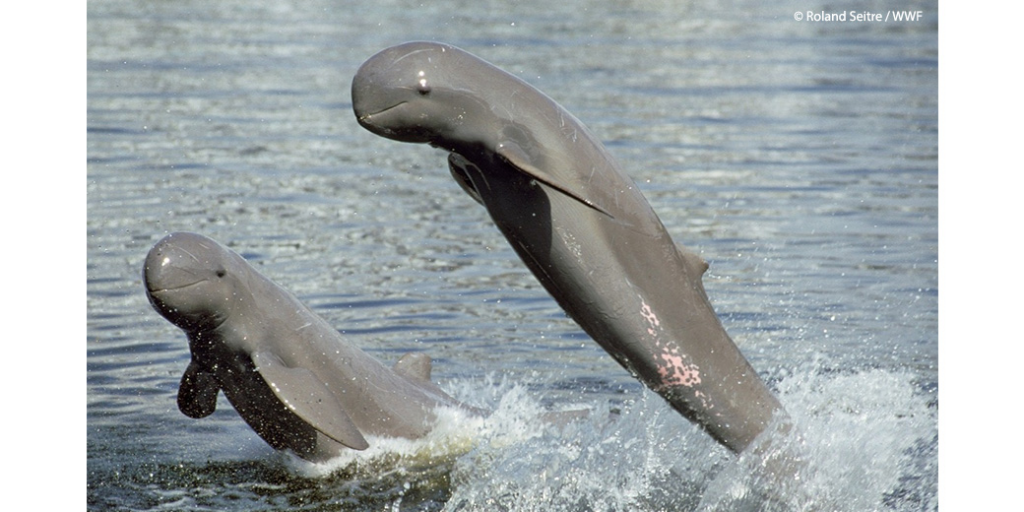Dolphin boom in Odisha’s Chilika lake
About Irrawaddy Dolphins

- There are five isolated freshwater Irrawaddy dolphin populations: in Myanmar they live in the Ayeyarwady River (also known as the Irrawaddy River); in Borneo, they live in the Mahakam River; in Cambodia and Lao PDR they live in the Mekong River; in India they live in Chilka Lake; and in Thailand they live in Songkhla Lake.
- These dolphins have a bulging forehead, short beak, and 12-19 teeth on each side of both jaws.
- IUCN Status: Endangered
- Following the opening of the sea mouth in Chilika in 2002, and the consequent increase in water depth, dolphins have reportedly been recorded in more areas of the lake than before, perhaps indicating an expansion of suitable habitat.
Chilika Lake

- It is Asia’s largest brackish water lagoon, located in the Odisha’s Coast. It is spread over Khurda, Ganjam and Puri districts of Odisha.
- It is the largest wintering ground for migratory waterfowl found anywhere on the Indian sub-continent.
- Chilika lake was designated as a “Ramsar Site”, i.e. a wetland of International Importance. The Nalaban Island within the lake is notified as a Bird Sanctuary under Wildlife (Protection) Act, 1972.
Why in the news?
- In a recent aquatic survey at Chilika Lake, a surge has been observed in dolphin populations.
- Irrawaddy Dolphins which are iconic species of Chilika have seen a growth in population from 146 to 162 this year.
- There is also growth in population of other dolphin species i.e., Humpback dolphins (IUCN status: Endangered) and Bottle-nose dolphins (IUCN status: Near Threatened).
- Around 544 dolphins comprising all the three species have been identified in this survey.
References:
Subscribe
Login
0 Comments
